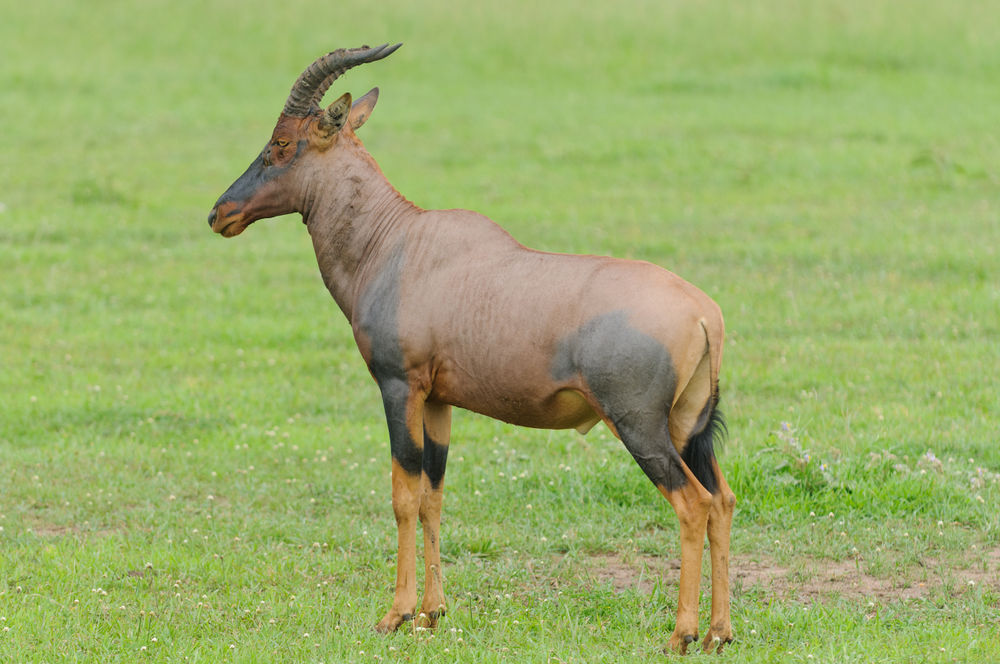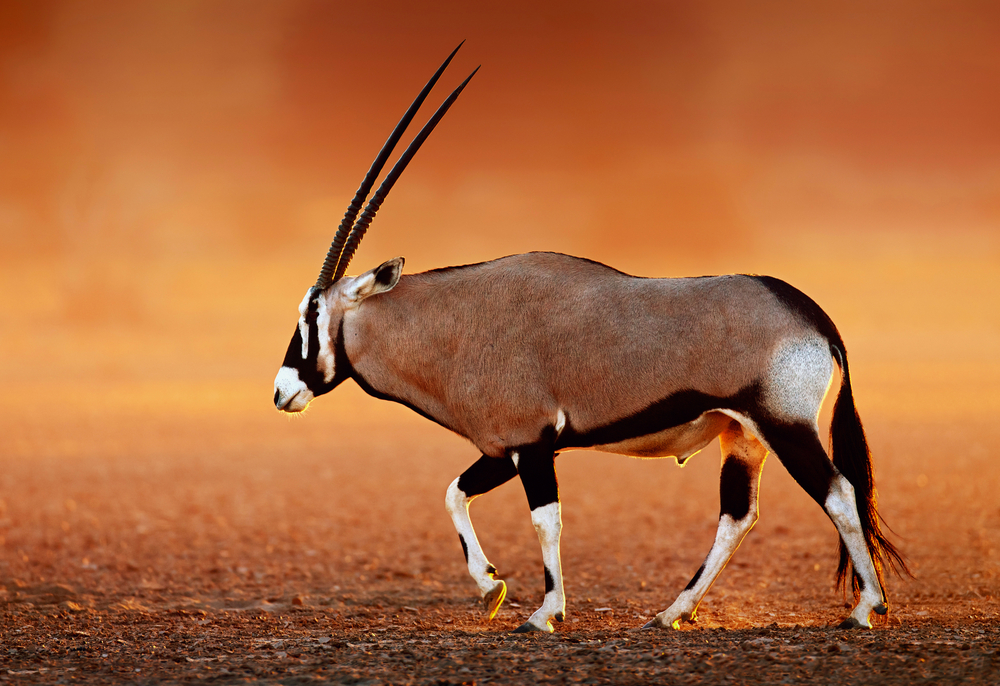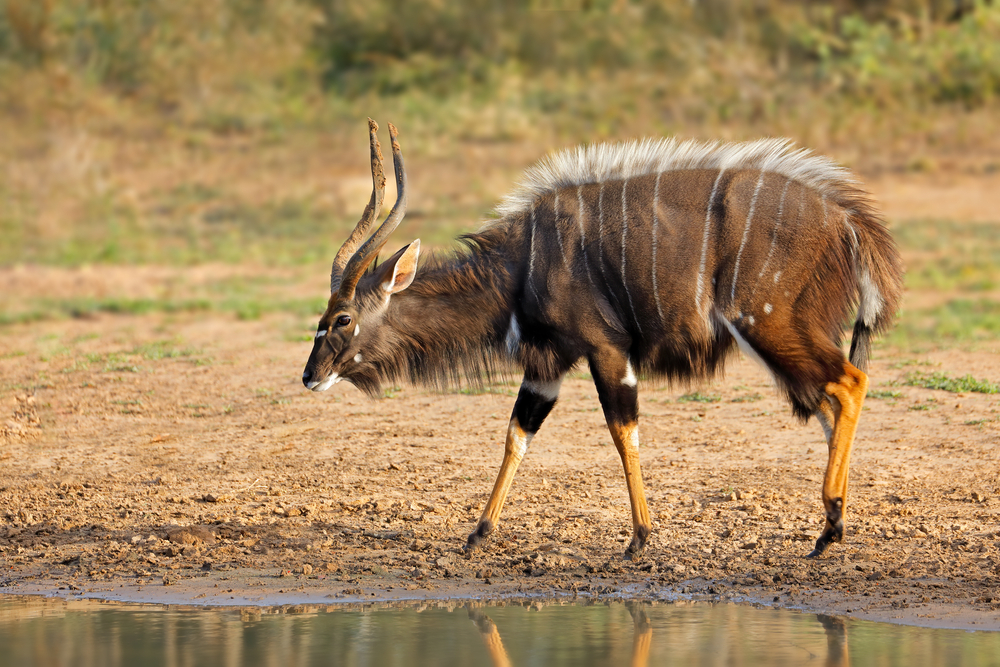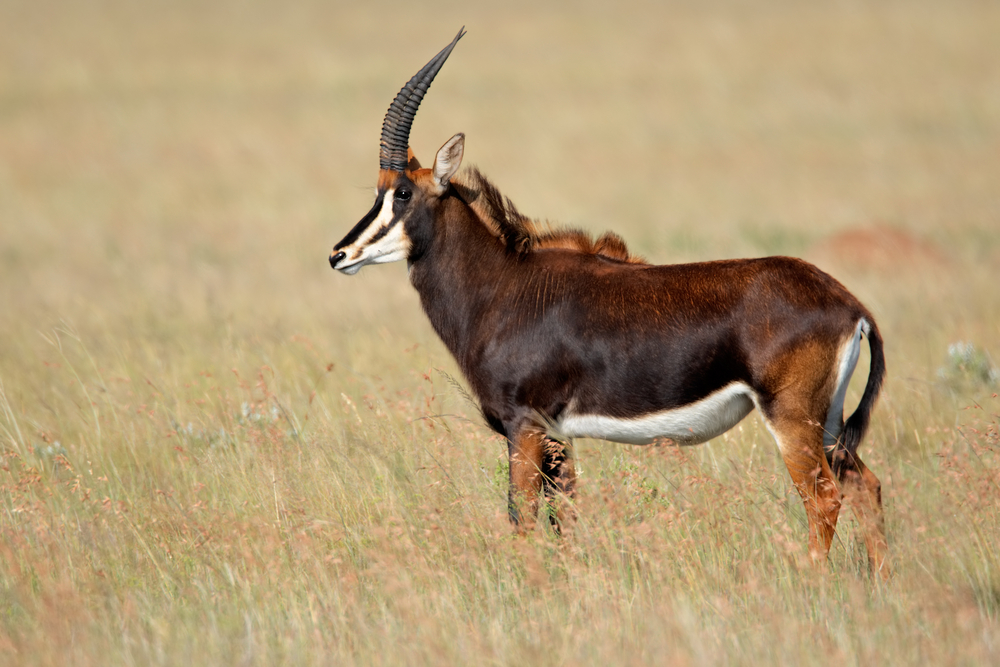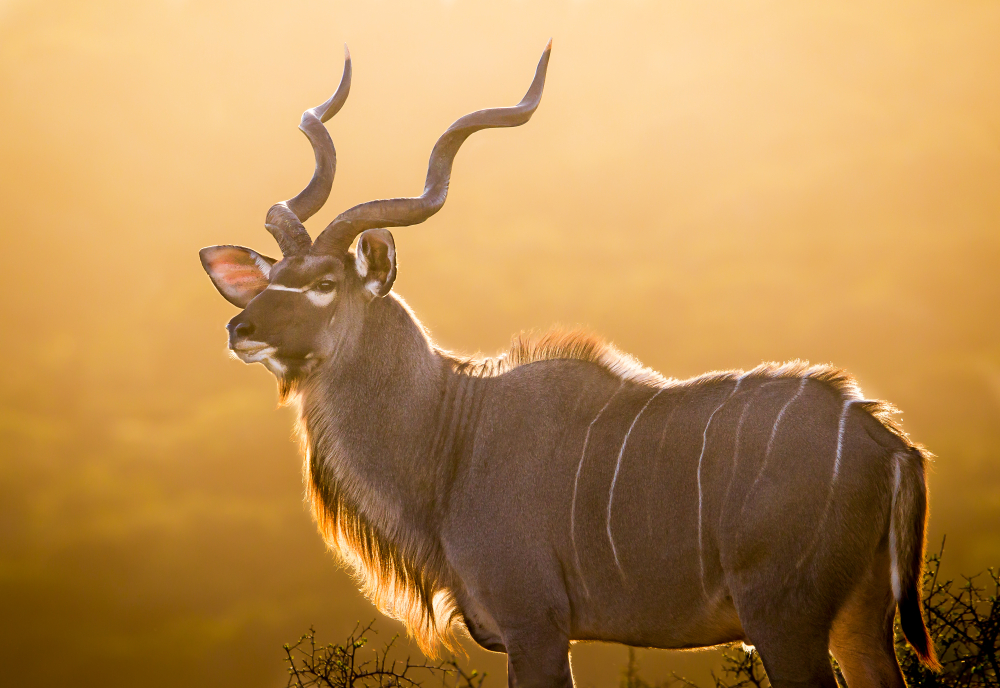Physical Characteristics
The Tsessebe is a distinctive and athletic antelope, easily recognized by its elongated build, unique body posture, and striking coloration. As a member of the Bovidae family and the Alcelaphinae subfamily, it shares physical traits with topis and hartebeests but remains a clearly defined species of its own.
Size and Build
Tsessebes are medium to large antelopes, with adult males standing about 120 cm (47 in) at the shoulder and weighing between 130–160 kg (287–353 lbs). Females are slightly smaller, averaging 110 cm (43 in) in height and 100–120 kg (220–265 lbs) in weight.
Their body is long and lean, with:
-
A sloping back formed by long forelegs and shorter hind legs
-
A deep chest and narrow waist
-
A relatively small head perched atop a muscular neck
This structure gives the Tsessebe a posture that appears almost hunched, especially when viewed from a distance.
Coat and Coloration
The coat is glossy reddish-brown, with darker or even purplish-black markings on the face, shoulders, thighs, and legs. A black facial mask—often extending from the nose to between the eyes—is one of the Tsessebe’s most recognizable traits. The underbelly is paler, and the rump often displays white patches or highlights.
Their skin is loose and thin, with short hair adapted for high-speed running and effective heat dissipation. The glossy sheen of the coat may also reflect sunlight, helping to regulate temperature.
Horns
Both sexes have strong, ridged, lyre-shaped horns that curve outward, upward, and slightly inward toward the tips. Horns average 30–40 cm (12–16 in) in length and are used in ritualized fights and dominance displays during the breeding season. Males’ horns are usually thicker and more robust than those of females.
Head and Facial Features
The face is narrow and elongated, with large, expressive eyes positioned for panoramic vision—essential for spotting predators. The ears are medium-sized and mobile, and a bare patch of skin may be present beneath the eyes or on the snout.
Legs and Hooves
Tsessebes have long, powerful legs and small, hard hooves, adapted for rapid acceleration and sustained high-speed chases. Their speed and endurance make them among the fastest antelopes in Africa.
This blend of speed, strength, and visual signaling makes the Tsessebe not only a striking presence on the savanna but also a highly specialized grazer and survivor in predator-rich grassland environments.




































































